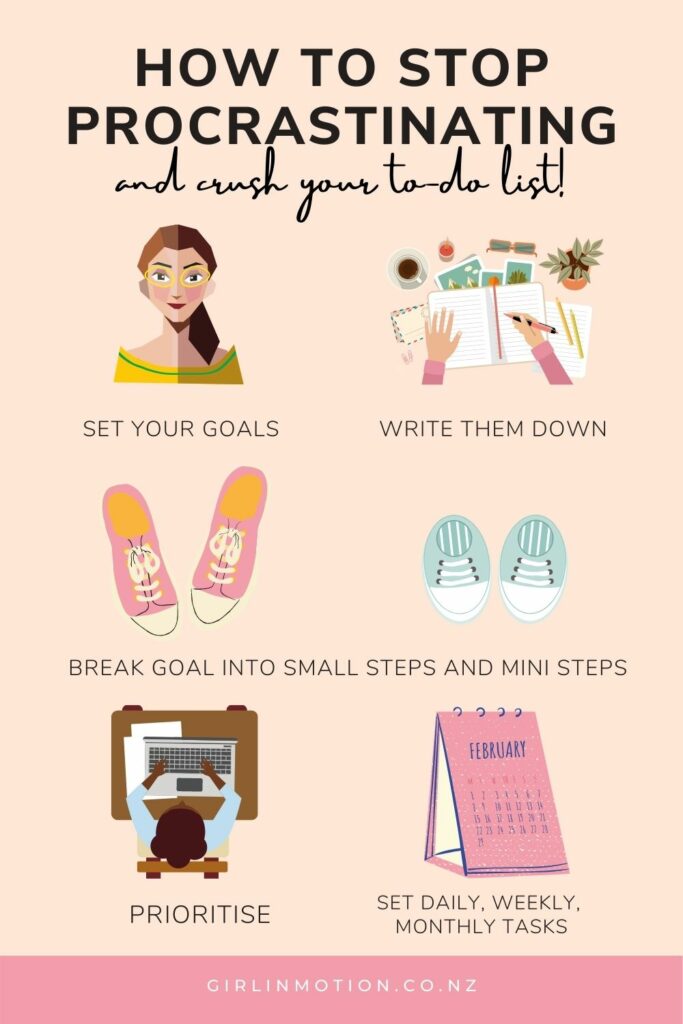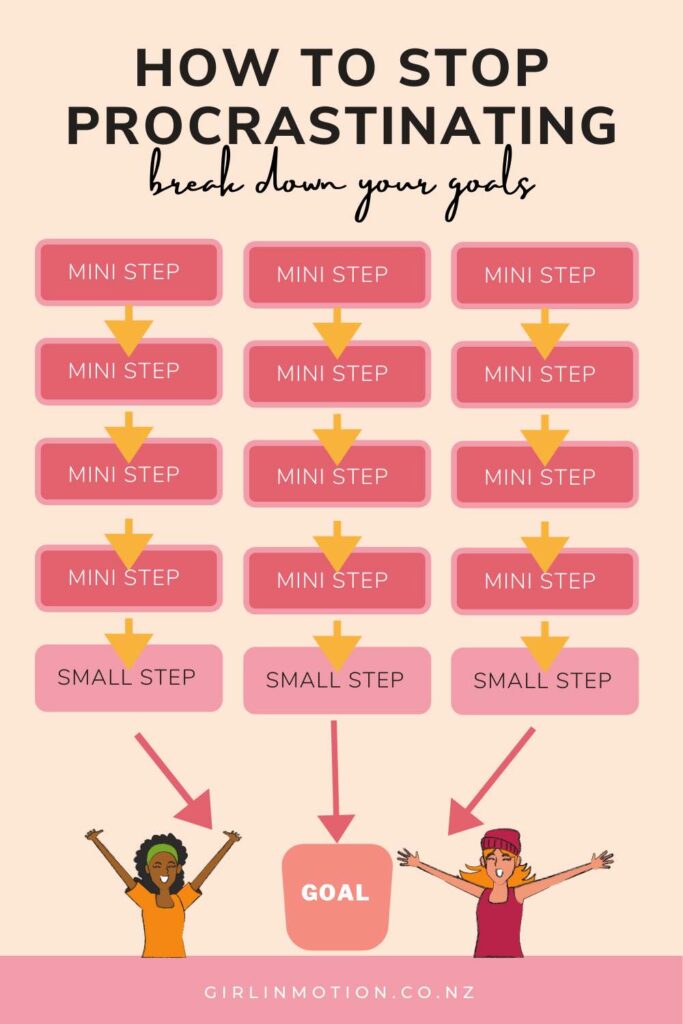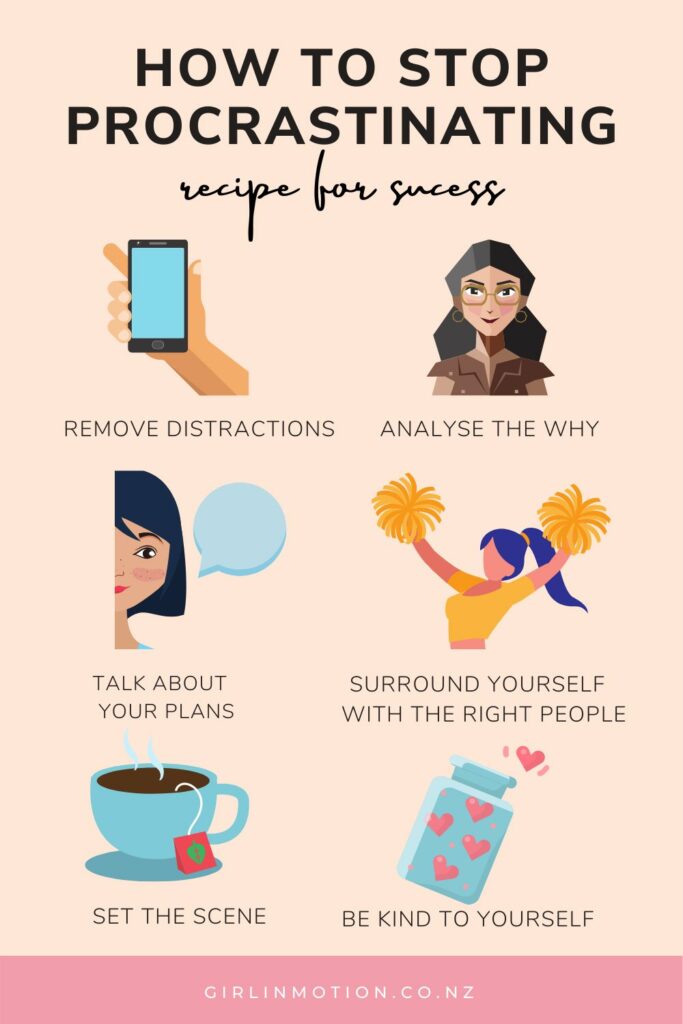
If you are looking for tips on how to stop procrastinating, you’ve come to the right place. Procrastination is my nemesis. I am a master of getting things done, and passionately hate tasks that sit undone.
I have a bit of a reputation for tackling tasks swiftly. A client of mine once told me “Natalia, you are a productivity machine”, and while that may be taking things a bit far, I do get a kick by getting things done. I truly love the satisfaction of an item crossed in my to-do list!
In this article, I am going to share some tips and tricks that help me be productive. I hope they help you to stop procrastinating and crush your to-do list. Read on.
What is procrastination?
The official meaning of the term Procrastination according to the Merriam-Webster dictionary is:
to put off intentionally the doing of something that should be done.
You know that niggly feeling that you should really be doing something, but you just keep putting it off. We have all been guilty of procrastinating from time to time!
Why do we procrastinate?
Psychology Today says:
“Procrastination is a self-defeating behavior pattern, but it can be seen as serving a psychological purpose, especially for people with perfectionist tendencies, by protecting the individual against fear of failure, judgment by others, and self-condemnation.”
While I am not a psychology expert, I do agree with the quote above. I am a perfectionist, and as such have fallen victim to putting things off for fear of them not being good enough. I have very high expectations for my work, and this can cause me to overthink and delay things before I present them to the world.
How to stop procrastinating
Over the years I have found that the best way for me to deal with procrastination is to break down big goals into small tasks. This trick seems to help me reduce anxiety and prompts me to get things done. Below I will talk you through the system that I use to help me be productive and crush my “to-do” lists.

1 – Set your goals
The first step to stop procrastinating and getting stuff done is to define what it is that you are trying to achieve. It may sound obvious, but being clear about your goal is the first step towards an action plan. No need to overthink it or get philosophical about it. Simply define what you want to do. Be as specific as you can.
2 – Write them down
Once you know what you are trying to achieve, write it down. Write a list, as long as it needs to be. I am a big fan of pen and paper, but you do what works for you. If you prefer digital tools, find a fancy app and make a note, use a diary, or put Post It notes on your desk. Use the method that you prefer, but the important thing is to translate your thoughts into words.
I enjoy using a notebook and a pen during the day, but if I am on the go or have an idea when I am in bed (like I very often do!) I use the notes app on my phone. I find that it is helpful to have something that is always with me to write down ideas as they come to mind.
YOU MAY ALSO LIKE: How to overcome the fear of starting a business
3 – Break down goals into small steps
Your goal may be to “Start a business to replace my full-time salary.” This is a good goal, but it is a big, broad, goal. Think about the individual tasks that you need to take to get there and break the journey down into small, manageable steps.
So, with your end goal in mind (start a business), what are the immediate steps that you need to take to get there?
For example
- Define what is the product/service I am going to offer
- Come up with a name for the business
- Sort out the accounts side of my business
- Design a logo
- Put together terms of service
- Build a website
- And so on….
Break down your goal into the smaller steps that you need to take to achieve it.
Like I said above, I find that doing this helps me to stop procrastinating and reduces my anxiety. The overall goal may seem a bit scary and unattainable, but when you break it down into small steps, it suddenly seems more manageable!
4 – Break small steps into mini-steps
Now it is time to break each of your small steps above into even smaller steps. So pull each of your above tasks apart, and break them into mini-steps.
So, for example, if your chosen small step is “Sort out the accounting side of the business”, the mini-steps can be:
- Google local accounting firms
- Create shortlist of suitable firms
- Write down questions to ask potential accountants
- Email candidates
- Got you bank and open a business bank account
- Set up Transferwise
- And so on
Below is a visual to explain the above. You will see how there are several mini-steps that create a small steps, and then several small steps that help you accomplish your goal :

5 – Prioritise
Now that you have your list of small steps and mini-steps, it is time to prioritise them. Go through the list of small steps first and decide which tasks need to be done first.
For example, you will need a business name and a logo before you can build your website, so you should tackle those items first.
Once you’ve organised your small steps, it is time to do the same with your mini-steps. Prioritise them in order of importance.
6 – Plan your day, week, and month
Here comes the fun part. Now you need to grab all the information above and use it to put together a plan of attack.
I like setting myself daily, weekly and monthly goals.
- Monthly goals: These are usually a combination of small steps and bigger goals
- Weekly goals: these are usually a combination of small steps and mini steps.
- Daily goals: I normally choose 2-4 tasks to accomplish each day. (these will be mini steps)
I normally set my weekly to-do list on a Friday afternoon (I like having my week planned ahead of me) and I write a daily to-do list each morning. And yes, things come up and priorities change, so while I have a plan, it is constantly changing and adapting!

Tips to stop procrastinating
Below are some things that you should consider as you get ready to work on your small steps and mini-steps. Setting the right scene and working on your mindset can help you be more focused and crush your to-do list faster.
1 – Remove distractions
When it is time to stat working on the first item of your to-do list, remove any possible distractions. This could be putting your phone away or going somewhere quiet so you can focus.
2 – Analyse the why
Analyse why you have been procrastinating a particular project. Is it only a lack of organisation or is it something else? It is a fear of change? Fear of failure? Be honest with yourself and identify if there are any other reasons you are not moving forward.
3 – Talk about your plans
Tell people about your plans. Talk to your husband, wife, friend, neighbour, Uber driver about what you are trying to achieve. Talking about it will give you more clarity and help keep you accountable. Once your project is out in the world, you will be more motivated to make it work.
4 – Surround yourself by positive people
There will be bumps in the road when you are working on big goals, and you will need support to keep pushing forward. Surround yourself with positive people so they can cheer you on and lift you when things get tough. Choose your support crew wisely!
5- Set the scene
Make sure your work environment is inviting and cosy when you finally get ready to start working through your to-do list. Think music, a cup of coffee, comfy chair – set the right scene to feel like a boss.
6 – Be kind to yourself
Be prepared to reach setbacks. Plans change. Things happen. The important thing is to get back on track. Remember that mini-steps are still moving your forward!

What motivates you to stop procrastinating?
In this article, I have shared the things I do to help me to stop procrastinating. These are the things that I do that help me be proactive and crush my to-do list. I would love to hear what works for you! Leave a comment or DM me on Instagram with your tips!
Need a bit more motivation? Read these articles:
Latest blog posts







